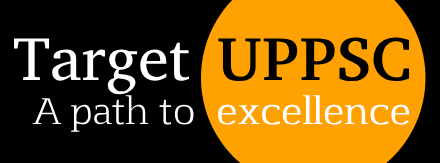AWIP, Science & Technology, Technology
Q. Explain the concept of dual-use technologies. Discuss their implications for national security and development.
Introduction:
Dual-use technologies refer to innovations that can be utilized for both civilian and military purposes. These technologies, while developed for peaceful applications, often have significant strategic or defense implications. Examples include nuclear energy, satellite systems, artificial intelligence (AI), and biotechnology. The dual-use nature of these technologies presents opportunities for development but also challenges in terms of security and regulation.
Understanding Dual-Use Technologies:
- Definition: Technologies designed for civilian use but also applicable in military or strategic contexts.
- Examples:
- Nuclear Technology: Used for energy generation (civilian) and nuclear weapons (military).
- Artificial Intelligence (AI): Applied in autonomous vehicles (civilian) and drone warfare (military).
- Biotechnology: Used in healthcare advancements (civilian) and bio-weapons development (military).
Implications of Dual-Use Technologies:
1. Implications for National Security:
- Strategic Advantage:
Nations with advanced dual-use technologies gain a strategic edge in defense and international diplomacy.- Example: India’s space technology, developed by ISRO, supports defense applications like missile navigation and surveillance.
- Threat of Proliferation:
Dual-use technologies, if accessed by non-state actors or adversaries, can pose significant security threats.- Example: Cybersecurity vulnerabilities in AI and ICT systems could lead to cyber-attacks.
- Regulatory Challenges:
Monitoring and controlling the use of dual-use technologies is difficult due to their widespread civilian applications.- Example: Misuse of drone technology for terrorist activities.
2. Implications for Development:
- Economic Growth:
Dual-use technologies drive innovation and industrial development, contributing to economic growth.- Example: Advancements in 5G and IoT technologies boost both civilian and defense industries.
- Scientific Progress:
Investments in dual-use technologies promote R&D, fostering technological innovation across sectors.- Example: India’s nuclear energy program supports both power generation and defense needs.
- Improved Public Services:
Dual-use technologies improve infrastructure, healthcare, and disaster management.- Example: Satellite technology aids in disaster monitoring and agricultural planning.
Challenges of Dual-Use Technologies:
- Ethical Concerns:
- Use of AI and biotechnology for weapons development raises moral and ethical issues.
- Export Controls:
- Strict international regimes like the Wassenaar Arrangement limit technology sharing.
- Risk of Misuse:
- Technologies like drones or bioengineering can be exploited for terrorism or warfare.
- High Costs of Development:
- Developing dual-use technologies requires substantial investment in R&D, often inaccessible to developing nations.
Way Forward:
- Strengthening Regulation:
- Enhance international and domestic frameworks to monitor and regulate dual-use technologies.
- Example: India’s export control policies align with the Missile Technology Control Regime (MTCR).
- Encouraging Ethical Use:
- Promote global discussions on the responsible use of technologies through platforms like the United Nations.
- Investing in R&D:
- Increase funding for dual-use technology development to ensure strategic independence.
- Balancing Civilian and Military Applications:
- Prioritize the development of technologies that have high civilian utility without compromising national security.
Conclusion:
Dual-use technologies are at the intersection of opportunity and risk, offering immense potential for national development while posing significant security challenges. For India, leveraging these technologies responsibly and strategically is crucial to achieving both economic progress and defense self-reliance. A balanced approach, combining robust regulation, ethical use, and innovation, will ensure that dual-use technologies contribute to sustainable growth and security.

